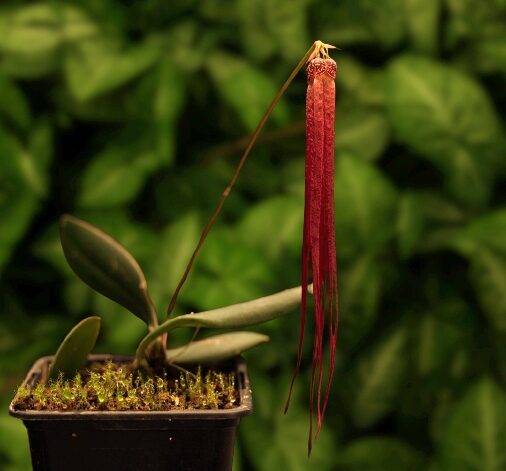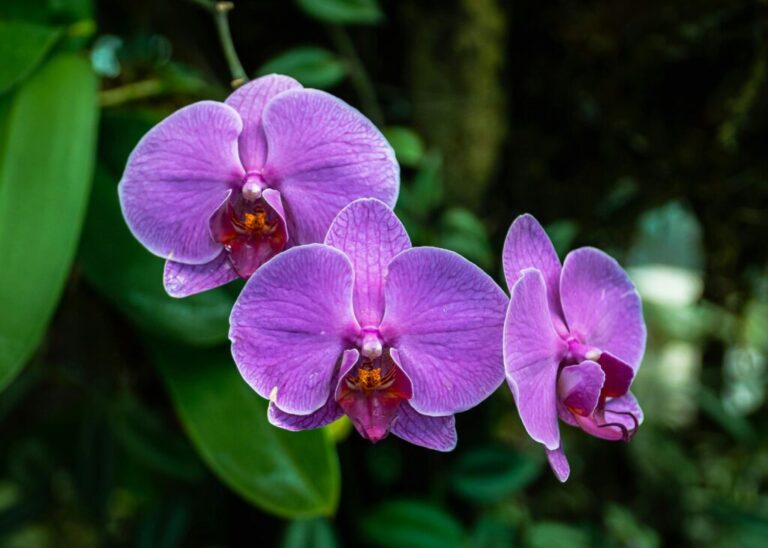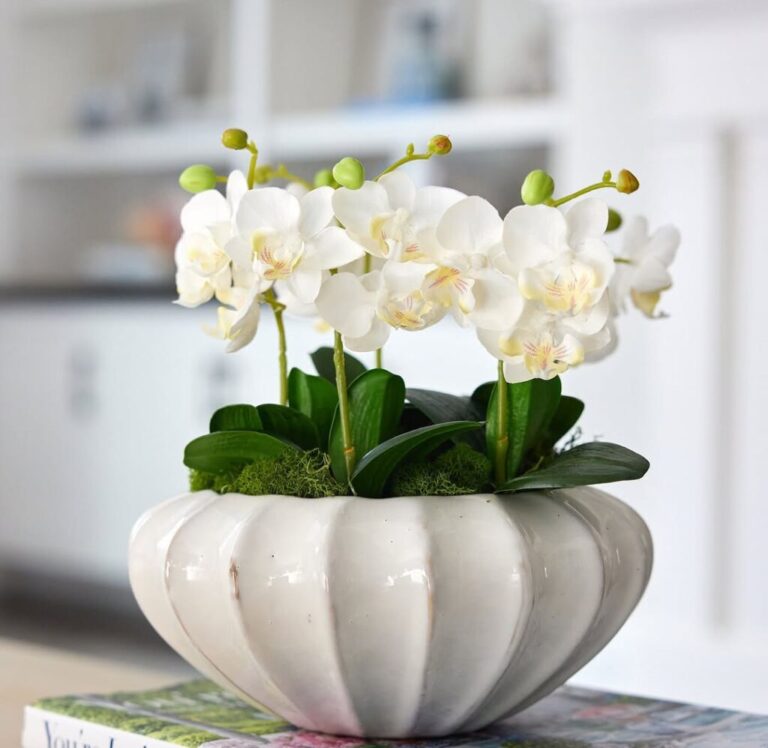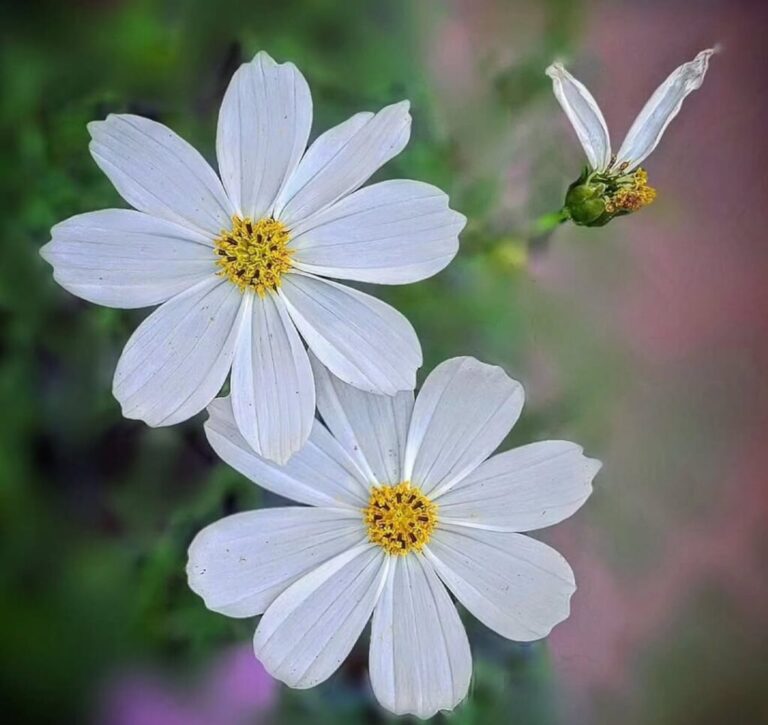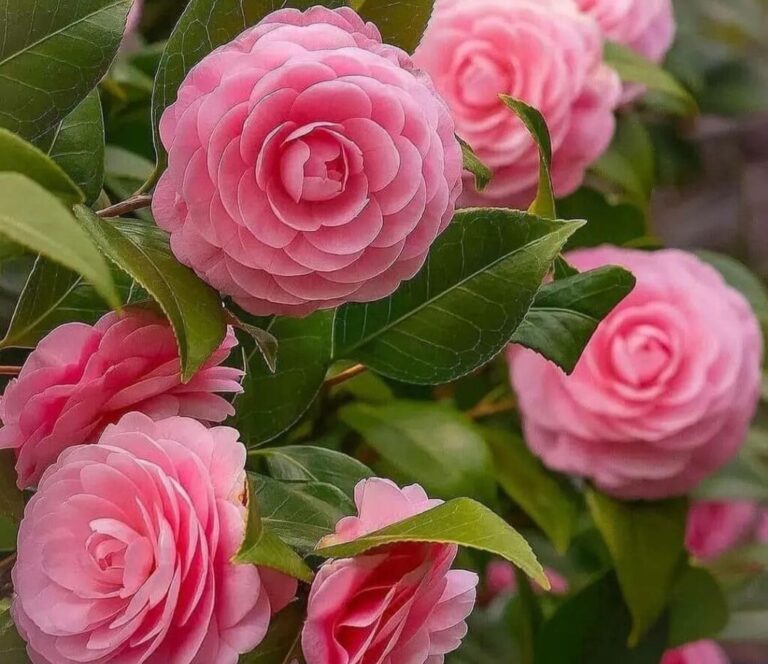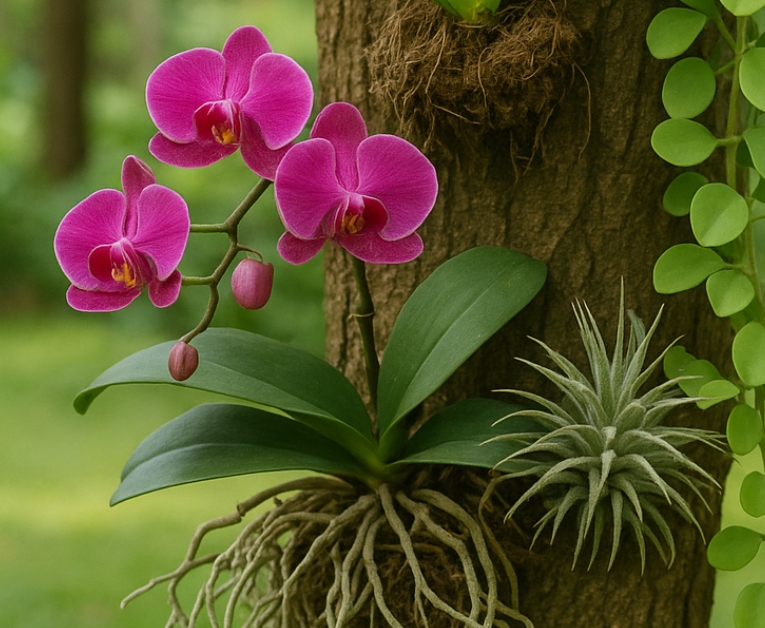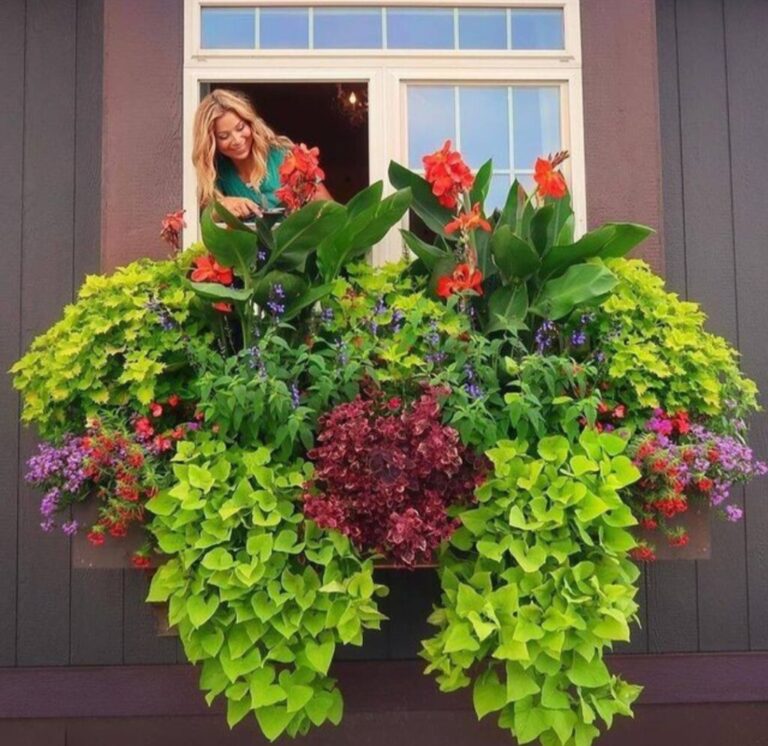Bulbophyllum treschii ‘Octopussy’ is a captivating orchid hybrid known for its unique appearance and relatively easy care requirements, making it an excellent choice for beginners looking to dive into the world of orchid cultivation. In this comprehensive guide, we’ll walk you through ten essential steps to ensure the health and vitality of your Bulbophyllum Treschii ‘Octopussy’.
- 1 Understanding Bulbophyllum Treschii ‘Octopussy’
- 2 Providing the Right Environment
- 3 Choosing the Proper Potting Medium
- 4 Selecting the Right Pot and Mounting Method
- 5 Providing Adequate Lighting
- 6 Establishing a Watering Routine
- 7 Fertilising Requirements
- 8 Monitoring for Pests and Diseases
- 9 Providing Adequate Air Circulation
- 10 Repotting as Needed
- 11 FAQ
Understanding Bulbophyllum Treschii ‘Octopussy’
Before diving into care specifics, it’s crucial to familiarise yourself with the characteristics of Bulbophyllum treschii ‘Octopussy’. This hybrid typically features striking, elongated petals resembling octopus tentacles, hence its intriguing name.
Providing the Right Environment
Creating the perfect environment for your Bulbophyllum treschii ‘Octopussy’ is essential for its overall health and growth. This orchid thrives in warm, humid conditions reminiscent of its native tropical habitats. Aim to maintain temperatures between 65 and 80°F (18 and 27°C) and humidity levels of 50–70%.
To achieve the ideal conditions, consider placing your orchid in a location with consistent temperatures and minimal fluctuations. Avoid areas near draughty windows, vents, or heating or cooling sources that could expose the plant to sudden temperature changes.
Humidity is equally crucial for Bulbophyllum treschii ‘Octopussy’ as it mimics the moist environments found in its natural habitat. You can increase humidity levels by using a humidifier, grouping plants together to create a microclimate, or placing the orchid on a humidity tray filled with water and pebbles. Misting the leaves regularly can also help maintain adequate moisture levels.
By providing the right environment characterised by warmth and humidity, you’ll create an optimal growing environment for your Bulbophyllum treschii ‘Octopussy’, ensuring its vibrant and healthy growth.
Choosing the Proper Potting Medium
Selecting the right potting medium is crucial for the health and growth of your Bulbophyllum treschii ‘Octopussy’. This orchid thrives in a well-draining mix that mimics its natural epiphytic habitat. An ideal potting medium consists of a blend of materials such as bark, sphagnum moss, and perlite.
Bark serves as the primary component, providing stability while allowing for excellent drainage. It mimics the orchid’s natural growing conditions by preventing water from pooling around the roots. Sphagnum moss retains moisture and provides additional support, while perlite adds aeration to the mix, preventing compaction and ensuring sufficient airflow to the roots.
When potting your Bulbophyllum treschii ‘Octopussy’, choose a pot with ample drainage holes to prevent waterlogging, which can lead to root rot. Ensure that the potting medium is loose and airy, allowing the roots to breathe and absorb nutrients efficiently.
It’s essential to repot your orchid every 1-2 years to refresh the potting medium and prevent it from breaking down. During repotting, gently remove old roots and trim any dead or rotting parts before transferring the orchid to a slightly larger container with fresh potting mix.
By choosing the proper potting medium, you provide your Bulbophyllum treschii ‘Octopussy’ with the ideal growing environment, promoting healthy root development and robust growth.

Selecting the Right Pot and Mounting Method
Choosing the appropriate pot and mounting method is essential for the well-being of your Bulbophyllum treschii ‘Octopussy’. Here’s how to do it effectively:
Selecting the Right Pot:
When selecting a pot for your orchid, opt for one with ample drainage holes to prevent water accumulation, which can lead to root rot. Additionally, consider a transparent or slotted container to monitor root health and moisture levels easily.
The pot should be slightly larger than the orchid’s root system to accommodate growth but not excessively large, as this can lead to overwatering and root suffocation. A plastic or clay pot is suitable, with clay pots providing better aeration but requiring more frequent watering.
Mounting Method:
Alternatively, you can mount your Bulbophyllum treschii ‘Octopussy’ on a piece of wood or other suitable material. Mounting orchids simulates their natural epiphytic habitat and can enhance airflow around the roots.
To mount your orchid, follow these steps:
Select a piece of wood, cork bark, or other mountable material.
Attach the orchid securely to the mount using fishing line, orchid clips, or plant-safe glue. Ensure the roots are in contact with the mount and have room to grow.
Hang the mounted orchid in a location with appropriate lighting and airflow, such as near a window or under artificial grow lights.
Monitor the mounted orchid regularly to ensure the mount remains stable and the roots remain healthy. Mist the roots occasionally to prevent them from drying out completely.
By selecting the right pot or mounting method, you provide your Bulbophyllum treschii ‘Octopussy’ with a stable and suitable growing environment, promoting healthy growth and vibrant blooms.
Providing Adequate Lighting
Proper lighting is essential for the growth and flowering of your Bulbophyllum treschii ‘Octopussy’. Here’s how to ensure your orchid receives the right amount of light:
Understanding light requirements:
Bulbophyllum treschii ‘Octopussy’ thrives in bright, indirect light. While it requires ample light to fuel photosynthesis and bloom, direct sunlight can scorch its leaves. Understanding its light requirements is crucial for maintaining its health and vitality.
Finding the Right Location:
Your orchid should be placed in an area with indirect, bright light. A north- or east-facing window is ideal, as it provides gentle morning sunlight without the intensity of the afternoon sun. If natural light is limited, supplement with artificial grow lights designed for orchids.
Monitoring light levels:
Monitor the intensity of light your orchid receives throughout the day. If the leaves appear pale green or yellowish, it may indicate insufficient light. Conversely, if the leaves turn dark green or reddish, it could be a sign of too much light exposure.
Adjusting as Needed:
During the summer months, when sunlight is more intense, consider shading your orchid or moving it slightly further from the window to prevent leaf burn. In contrast, during the winter months, when sunlight is weaker, ensure your orchid receives adequate light exposure by moving it closer to the window or providing supplemental lighting.
Maintaining Consistency:
Consistency is key when it comes to lighting. Avoid frequently moving your orchid to different locations, as this can disrupt its growth patterns and lead to stress. Once you find the perfect spot, try to keep your orchid there as much as possible.
By providing your Bulbophyllum treschii ‘Octopussy’ with the right balance of light, you’ll encourage healthy growth and prolific flowering, ensuring a stunning display of blooms for years to come.
Establishing a Watering Routine
Establishing a proper watering routine is crucial for the health and well-being of your Bulbophyllum treschii ‘Octopussy’. Follow these guidelines to ensure your orchid receives the right amount of water:
Understanding Watering Needs:
Bulbophyllum Treschii ‘Octopussy’ prefers consistently moist conditions, but it’s essential to avoid overwatering, which can lead to root rot. Understanding its watering needs based on environmental factors and its growth stage is key.
Checking moisture levels:
Before watering, check the moisture level of the potting medium by inserting your finger into the top inch. Water it now if it feels dry to the touch. Avoid watering on a fixed schedule, as environmental conditions and potting mix composition can affect moisture retention.
Watering Technique:
When watering your orchid, thoroughly saturate the potting medium until water runs freely from the drainage holes. Allow excess water to drain completely to prevent waterlogging. Avoid watering the leaves or pseudobulbs, as this can lead to rot and fungal infections.
Frequency of watering:
The frequency of watering depends on factors such as temperature, humidity, and potting medium. In general, water your Bulbophyllum treschii ‘Octopussy’ when the top inch of the potting medium feels dry, typically every 7–10 days during the growing season.
Adjusting for environmental conditions:
During periods of high temperatures or low humidity, your orchid may require more frequent watering to prevent dehydration. Conversely, reduce watering during cooler temperatures or when humidity levels are higher to avoid waterlogged roots.
Monitoring for signs of overwatering:
Watch for signs of overwatering, such as yellowing or wilting leaves, mushy pseudobulbs, or foul odours emanating from the potting medium. If you suspect overwatering, allow the potting medium to dry out slightly before watering again.
By establishing a consistent watering routine tailored to the needs of your Bulbophyllum treschii ‘Octopussy’, you’ll provide the optimal moisture levels for healthy growth and vibrant blooms.
Fertilising Requirements
Fertilising your Bulbophyllum treschii ‘Octopussy’ is essential to providing the necessary nutrients for robust growth and vibrant blooms. Here’s how to meet its fertilising requirements effectively:
Understanding fertiliser needs:
Bulbophyllum Treschii ‘Octopussy’ benefits from regular fertilisation during the growing season to support its active growth and flowering. Orchid fertilizers are specially formulated to meet the nutritional needs of orchids, providing essential elements such as nitrogen (N), phosphorus (P), and potassium (K), as well as trace minerals.
Choosing the Right Fertiliser:
Select a balanced orchid fertilizer with equal proportions of nitrogen, phosphorus, and potassium (e.g., 20-20-20) or a formula specifically formulated for orchids (e.g., 10-10-10). Alternatively, you can use a fertiliser designed for flowering plants, diluted to half strength, to avoid overfertilization.
Frequency of Fertilising:
During the active growing season, fertilise your Bulbophyllum treschii ‘Octopussy’ every two weeks. Reduce the frequency to once a month during the dormant winter months, when growth slows down. Always dilute the fertiliser to half or quarter strength to avoid damaging the delicate roots.
Application Method:
Apply the diluted fertiliser solution to moistened potting medium to prevent root burn. Water the orchid thoroughly after fertilising to distribute the nutrients evenly. Avoid getting fertiliser on the leaves or pseudobulbs, as it can cause burns or damage.
Monitoring Growth and Adjusting:
Monitor the growth and overall health of your orchid regularly. If you notice signs of nutrient deficiency, such as pale or yellowing leaves, stunted growth, or a lack of flowering, consider increasing the frequency of fertilisation slightly or switching to a different fertiliser formula.
Flush Out Accumulated Salts:
Every few months, flush the potting medium with plain water to remove any accumulated salts from fertilizers. This prevents salt buildup, which can damage the roots and inhibit nutrient absorption.
By providing your Bulbophyllum treschii ‘Octopussy’ with the right fertilising regimen, you’ll promote healthy growth, robust foliage, and prolific flowering, ensuring a stunning display of blooms season after season.
Monitoring for Pests and Diseases
Regular monitoring for pests and diseases is essential to maintaining the health and vitality of your Bulbophyllum treschii ‘Octopussy’. Here’s how to detect and address common issues effectively:
1. Pest Inspection:
Regularly inspect the leaves, stems, and roots of your orchid for signs of pests such as aphids, mealybugs, scale insects, spider mites, and thrips. Look for visible insects, webbing, or sticky residue.
Pay attention to any changes in leaf colour, texture, or growth patterns, as these can indicate pest infestations.
2. Disease Detection:
Watch for symptoms of common orchid diseases such as root rot, leaf spot, bacterial or fungal infections, and viral diseases. Symptoms include yellowing or browning of leaves, blackened or mushy roots, and wilting or stunted growth.
Monitor environmental conditions, such as humidity levels and airflow, as poor ventilation and high humidity can contribute to fungal and bacterial diseases.
3. Treatment and Prevention:
If pests are detected, isolate the affected orchid to prevent the infestation from spreading to other plants.
Treat pest infestations promptly using organic or chemical insecticides, following the manufacturer’s instructions carefully. Consider using natural predators, such as ladybirds or predatory mites, for biological control.
For fungal or bacterial diseases, trim away affected parts using sterile tools to prevent the spread of infection. Apply fungicidal or bactericidal treatments as recommended.
Improve cultural practices such as proper watering, adequate airflow, and appropriate lighting to prevent future pest and disease problems.
Quarantine new plants before introducing them to your orchid collection to prevent the introduction of pests and diseases.
4. Regular Maintenance:
Maintain a clean growing environment by removing debris, dead leaves, and spent flowers regularly to reduce hiding places for pests and pathogens.
Inspect the orchid’s growing medium periodically and repot as needed to refresh the potting mix and prevent the buildup of pathogens.
By diligently monitoring for pests and diseases and taking proactive measures to address any issues, you’ll ensure the long-term health and vigour of your Bulbophyllum treschii ‘Octopussy’, allowing it to thrive and flourish in your care.
Providing Adequate Air Circulation
Providing Adequate Air Circulation
Ensuring adequate air circulation around your Bulbophyllum treschii ‘Octopussy’ is crucial for maintaining optimal growing conditions and preventing issues such as fungal infections. Here’s how to promote healthy air circulation:
1. Choose the right location:
Place your orchid in a well-ventilated area with good air movement. Avoid placing it in a stagnant or enclosed space, such as a closed room or cabinet.
2. Use fans:
Install a small oscillating fan near your orchid to promote air circulation. Set it to a low speed to avoid excessive drying of the orchid’s foliage.
3. Open Windows:
If the weather permits, open windows or doors to allow fresh air to circulate throughout the room. This can help reduce humidity levels and prevent the buildup of stale air.
4. Avoid crowding:
Avoid overcrowding your orchid collection, as this can restrict airflow around individual plants. To encourage air circulation, leave enough space between plants.
5. Prune regularly:
Trim and remove dead or yellowing leaves, spent flowers, and any other debris from your orchid regularly. This not only improves aesthetics but also allows for better air movement around the plant.
6. Repot When Necessary:
Repot your Bulbophyllum treschii ‘Octopussy’ as needed to refresh the potting medium and improve drainage. This helps prevent waterlogging and promotes airflow around the roots.
7. Monitor humidity levels:
Pay attention to the humidity levels surrounding your orchid. A combination of high humidity and inadequate air movement can foster the growth of fungi. Utilise a hygrometer to track humidity levels and make necessary adjustments.
8. Provide adequate ventilation.
Ensure that your orchid’s growing area is well-ventilated to prevent the buildup of stagnant air. Use exhaust fans or open doors and windows to facilitate airflow.
By implementing these strategies, you’ll create an environment with optimal air circulation for your Bulbophyllum treschii ‘Octopussy’, promoting healthy growth and reducing the risk of fungal infections and other issues.
Repotting as Needed
Regular repotting is essential for maintaining the health and vitality of your Bulbophyllum treschii ‘Octopussy’. Follow these steps to know when and how to repot your orchid:
1. Check the potting medium:
Monitor the condition of the potting medium regularly. If it starts to break down or decompose, it’s time to repot your orchid. Additionally, if the roots are overcrowded and fill the pot, repotting may be necessary to provide more space for growth.
2. Choose the Right Time:
The best time to repot your orchid is during its active growing season, typically in spring or early summer. Avoid repotting during the dormant winter months, as the orchid is less active and may be more susceptible to stress.
3. Prepare the new pot:
Select a new pot that is slightly larger than the current one and has ample drainage holes. Clean the pot thoroughly with soap and water, and sterilise it with a diluted bleach solution to remove any potential pathogens.
4. Take the orchid out of its present pot.
Carefully remove the orchid from its current pot, gently teasing apart the roots if they are tightly bound. Be cautious not to damage the roots or pseudobulbs during this process.
5. Trim and inspect the roots.
Trim any dead, rotting, or damaged roots using sterile scissors or pruning shears. Inspect the remaining roots for signs of health, such as firm texture and green or white coloration.
6. Repot the orchid:
Place a layer of fresh potting medium in the bottom of the new pot, and position the orchid in the centre, spreading out the roots evenly. Fill the pot with additional potting medium, ensuring that the roots are covered but not buried too deeply.
7. Water and Care for the Orchid:
After repotting, give the orchid plenty of water, letting extra run off. Place the orchid in its usual location, providing appropriate light and temperature conditions. Avoid fertilising for several weeks after repotting to allow the orchid to acclimatise to its new environment.
8. Monitor and Adjust:
Monitor the orchid closely in the weeks following repotting, watching for signs of stress or dehydration. Adjust watering and care routines as needed to help the orchid recover and establish itself in its new pot.
By following these steps and repotting your Bulbophyllum treschii ‘Octopussy’ as needed, you’ll ensure that it has ample space to grow and thrive, promoting healthy root development and vibrant blooms.
FAQ
How do you care for Bulbophyllum treschii?
Bulbophyllum treschii requires warm temperatures, high humidity, and bright indirect light. Keep the soil moist but not waterlogged, and provide good airflow around the plant.
How do you take care of Bulbophyllum orchids?
Bulbophyllum orchids thrive in warm, humid environments with bright indirect light. Keep their soil consistently moist and provide good airflow to prevent rot.
How do you care for Bulbophyllum sanguineopunctatum?
Bulbophyllum Sanguineopunctatum needs warm temperatures, high humidity, and bright indirect light. Keep its soil evenly moist and provide good airflow to prevent fungal issues
What is the best potting mix for Bulbophyllum?
A well-draining mix with components like bark, perlite, and sphagnum moss works best for Bulbophyllum orchids to ensure proper drainage and aeration for healthy root growth.
